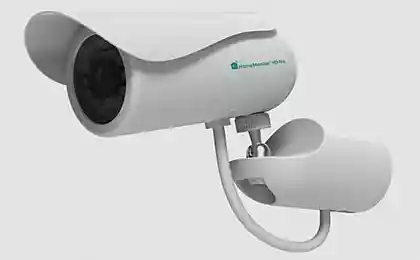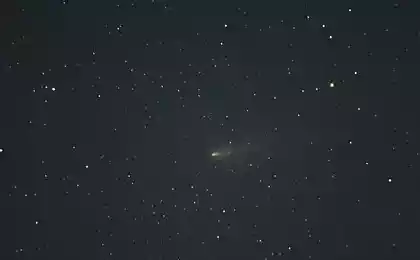928
Japanese scientists have created a camera that shoots at 4, 4 trillion frames per second
A group of scientists from various universities in Japan разработала High technology shooting frame rate of 4, 4 trillion per second and a resolution of 450 by 450 pixels. With it you can learn very fast processes - the dynamics of plasma chemical reactions, the occurrence and distribution of phonons in crystals.
The camera takes only a very short "movies", literally a few frames long. This limitation is due to the very principle of its work. To shoot using femtosecond flash of white light. At first light pulse is stretched along its path of movement, turning from a compact "lump" of photons in a small section in which the photons are following each other, lining up one behind the other wavelength. By using a system of mirrors, lenses, diffraction gratings and the mask piece is transformed into a series of short bursts of different colors flying each other. These flash illuminates the subject, and then using another combination of optical devices flashes of different wavelengths are sent to different places photosensor. So technically there is only one frame shooting, but its parts contain information about the state of your subject at different times.
Furthermore scientific applications, the camera may be useful in industry, such as fast control of various technological processes, as well as in medicine. Now scientists are working to make the camera more compact.
Source: habrahabr.ru/post/233261/
The camera takes only a very short "movies", literally a few frames long. This limitation is due to the very principle of its work. To shoot using femtosecond flash of white light. At first light pulse is stretched along its path of movement, turning from a compact "lump" of photons in a small section in which the photons are following each other, lining up one behind the other wavelength. By using a system of mirrors, lenses, diffraction gratings and the mask piece is transformed into a series of short bursts of different colors flying each other. These flash illuminates the subject, and then using another combination of optical devices flashes of different wavelengths are sent to different places photosensor. So technically there is only one frame shooting, but its parts contain information about the state of your subject at different times.
Furthermore scientific applications, the camera may be useful in industry, such as fast control of various technological processes, as well as in medicine. Now scientists are working to make the camera more compact.
Source: habrahabr.ru/post/233261/






















